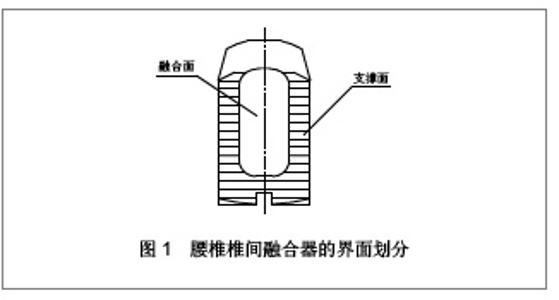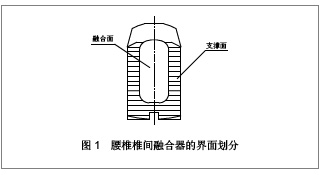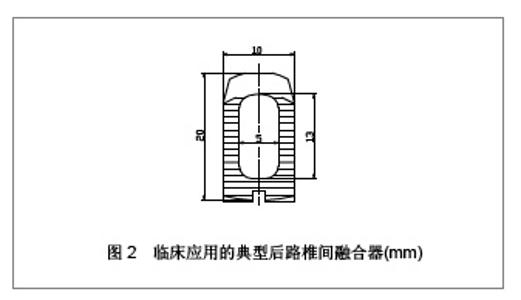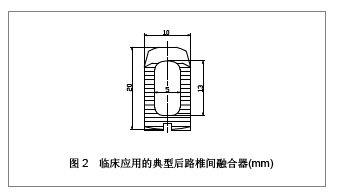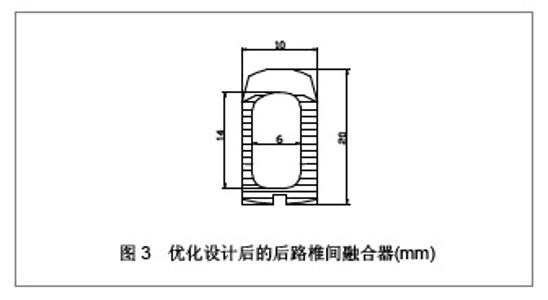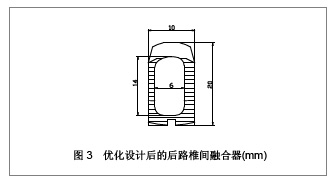| [1] 韩立建.腰椎椎体间融合术应用进展[J]. 江西中医药,2009, 40(321): 78-80.[2] 沈凯,谭祖健.几种常见腰椎融合术的比较[J].中国骨与关节损伤杂志,2011,26(11):1054-1056.[3] 张绍东,吴小涛,茅祖斌,等.后路腰椎椎间融合器融合术的并发症分析[J].中国脊柱脊髓杂志,2006,16(7):493-497.[4] 苗惊雷,张朝跃,詹瑞森,等.置入椎间融合器行腰椎融合后Cage移位的原因[J].中国组织工程研究与临床康复,2011,15(39): 7307-7310.[5] 王云清,汪明星,闫长明,等.后路腰椎椎间融合固定后融合器移位的成因及临床对策[J].颈腰痛杂志, 2011,32(5):342-345.[6] 王云清,汪明星,李华,等.医源性失误致后路腰椎融合固定疗效不佳原因[J].中国误诊学杂志,2011,11(30):7314-7315.[7] 杨长远,罗光平,朱钧,等.后路椎弓根钉系统联合Cage融合术治疗腰椎退行性疾并发症分析及防治[J].脊柱外科杂志,2010, 8(1):23-30.[8] Khanna G,Lewonowski K, Wood KB. Initial results of anterior interbody fusion achieved with a less invasive bone harvesting technique. Spine.2006;1;31(1):111-114.[9] Lai PL, Chen WJ, Niu CC, et al. The fusion rate of calcium sulfate with local autograft bone compared with autologous iliac bone graft for instrumented short-segment spinal fusion. Spine.2005;30(20):2293-2297.[10] 张桦.新型扩张式腰椎椎间融合器的研制和相关研究[D].第二军医大学,2009.[11] 李佳,欧云生.椎间融合器的研究进展[J].中国临床医学, 2009, 16(6):943-945.[12] 郑玉鹏,姜泳,杨涛,等.椎间融合器植骨融合治疗腰椎管狭窄症术后下肢不全瘫原因分析[J].中国医药报导,2011,8(3): 143-144.[13] 王建华,尹庆水,夏虹,等.微创椎间融合器的设计及其植入的解剖学研究[J].中国脊柱脊髓杂志,2008,18(9):669-672.[14] 李洪波,吴培斌,熊含颖,等.保留骨性终板在脊柱椎间融合手术中的意义[J].南昌大学学报:医学版,2010,51(5):73-76.[15] 顾剑辉,王以进.胸腰椎骨折不同内固定系统力学效果对比的研究[J].中华外科杂志1991,29(12):737-741.[16] 赵定麟. 现代脊柱外科学[M].上海:上海世界图书出版社,2006: 35.[17] 刘忠.脊柱内固定手术学[M]. 兰州:兰州大学出版社,2008: 22-23.[18] 李光灿,郑连杰,李靖年,等.脊柱交界区终板抗压强度分布规律的生物力学研究[J].中国脊柱脊髓杂志.2011,21(5):395-398[19] 李志刚,郑连杰,李光灿,等.腰骶椎终板生物力学特性的实验研究[J].中国脊柱脊髓杂志, 2007,17(3):210-213.[20] Kanayama M,Cunningham BW,Haggerty CJ,et al.In vitro biomechanical investigation of the stability and stress-shielding effect of lumbar interbody fusion devices. J Neurosurg,2000;93(spine 2):259-265. |
